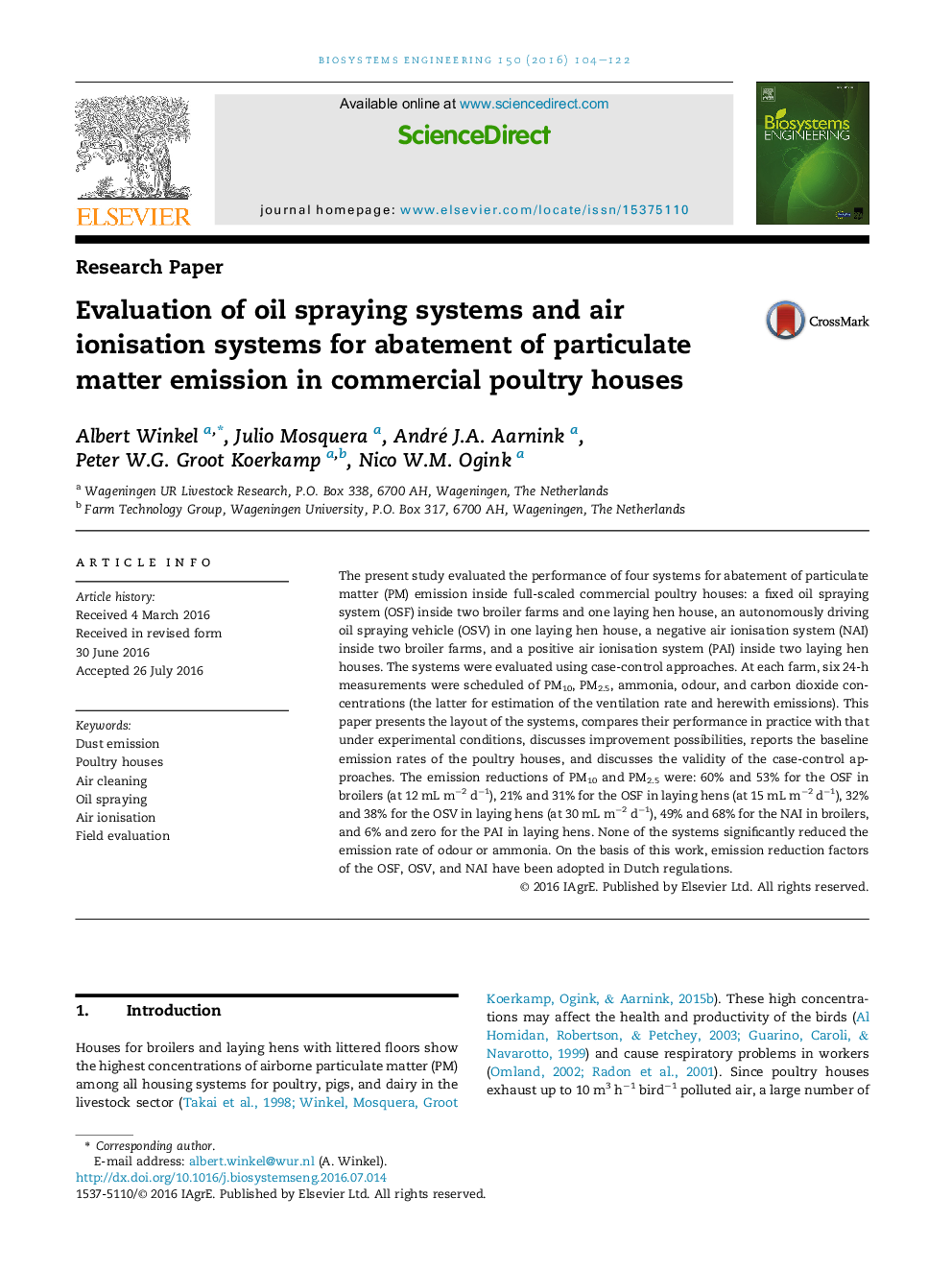| Article ID | Journal | Published Year | Pages | File Type |
|---|---|---|---|---|
| 8055075 | Biosystems Engineering | 2016 | 19 Pages |
Abstract
The present study evaluated the performance of four systems for abatement of particulate matter (PM) emission inside full-scaled commercial poultry houses: a fixed oil spraying system (OSF) inside two broiler farms and one laying hen house, an autonomously driving oil spraying vehicle (OSV) in one laying hen house, a negative air ionisation system (NAI) inside two broiler farms, and a positive air ionisation system (PAI) inside two laying hen houses. The systems were evaluated using case-control approaches. At each farm, six 24-h measurements were scheduled of PM10, PM2.5, ammonia, odour, and carbon dioxide concentrations (the latter for estimation of the ventilation rate and herewith emissions). This paper presents the layout of the systems, compares their performance in practice with that under experimental conditions, discusses improvement possibilities, reports the baseline emission rates of the poultry houses, and discusses the validity of the case-control approaches. The emission reductions of PM10 and PM2.5 were: 60% and 53% for the OSF in broilers (at 12Â mLÂ mâ2Â dâ1), 21% and 31% for the OSF in laying hens (at 15Â mLÂ mâ2Â dâ1), 32% and 38% for the OSV in laying hens (at 30Â mLÂ mâ2Â dâ1), 49% and 68% for the NAI in broilers, and 6% and zero for the PAI in laying hens. None of the systems significantly reduced the emission rate of odour or ammonia. On the basis of this work, emission reduction factors of the OSF, OSV, and NAI have been adopted in Dutch regulations.
Related Topics
Physical Sciences and Engineering
Engineering
Control and Systems Engineering
Authors
Albert Winkel, Julio Mosquera, André J.A. Aarnink, Peter W.G. Groot Koerkamp, Nico W.M. Ogink,
